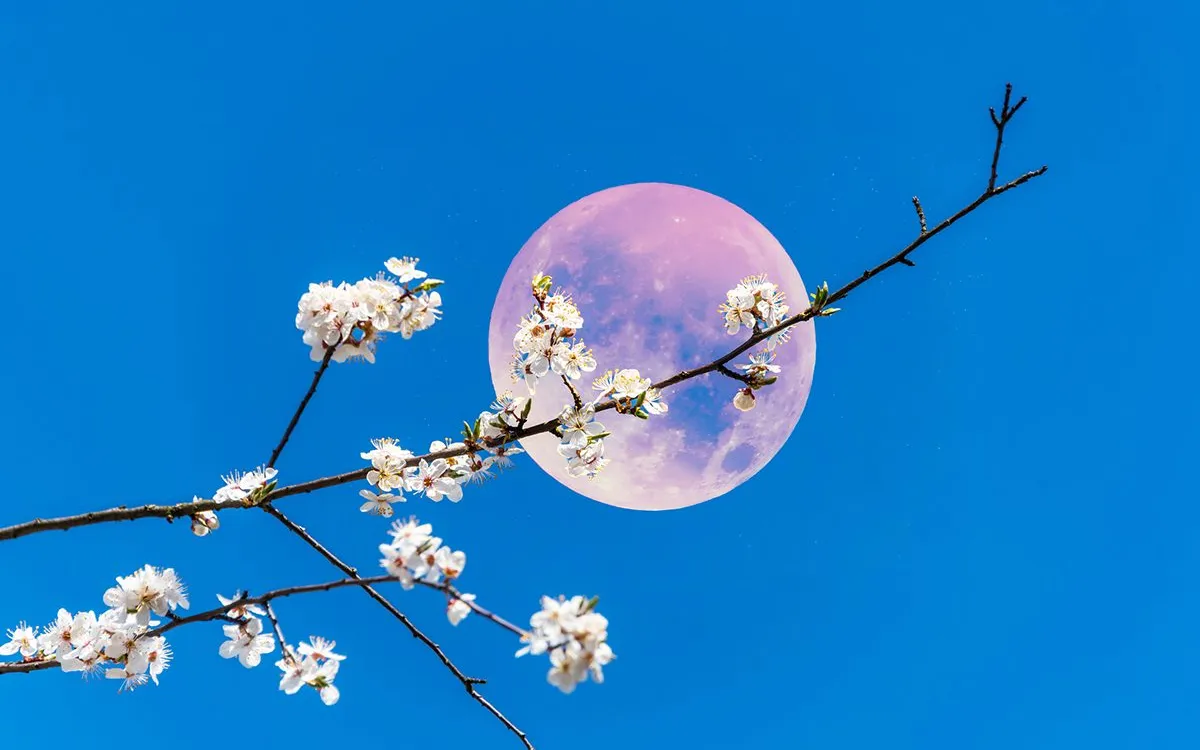
Tonight, Sunday, 13 April 2025, the Pink Moon will grace the night sky, accompanied by the brilliant star Spica. This celestial event offers stargazers a unique opportunity to witness one of the brightest stars in the spring sky closely positioned next to the full Moon. If you're keen on stargazing, consider subscribing to the BBC Sky at Night Magazine’s e-newsletter for more insights, and don't forget to check out our YouTube channel for visual guides on celestial events.
The Pink Moon will rise above the southeastern horizon at approximately 21:00 BST. Marking the fourth full Moon of the year, this lunar event is known for its vibrant name. However, it's essential to clarify that the Moon won't exhibit a pink hue during this phenomenon. The term 'Pink Moon' originates from the blooming of early spring flowers, particularly the pink phlox, which signifies the arrival of spring.
While the April full Moon won't actually appear pink, those fortunate enough to have a clear view of the horizon may notice a striking orange hue when the Moon is low in the sky. This color change is a result of the Earth's atmosphere scattering light, causing the Moon near the horizon to appear redder than usual. Additionally, due to a phenomenon known as the Moon illusion, the Moon may seem larger when it's close to the horizon.
This full Moon is also referred to as a Pink Micro Moon. This designation arises because the Moon will appear slightly smaller than usual due to its elliptical orbit around Earth. The Moon's distance varies; at times, it is closer (perigee) and at other times further away (apogee). Tonight’s Pink Moon coincides with the apogee, making it appear about 14.1% smaller and 30% dimmer than it would at perigee. However, the difference in size is minor and often goes unnoticed by the naked eye, so don't be misled by claims that tonight's Moon will look tiny!
As you gaze at the Pink Moon tonight, look for the bright star located above and to the right of it—this is Spica. Known as the brightest star in the constellation Virgo, Spica ranks as the 15th brightest star visible from Earth. Interestingly, Spica is not just a single star; it is a binary star system, consisting of two stars orbiting one another. Although they appear as one point of light from our vantage point, they are, in fact, two stars.
While some binary stars can be resolved with the aid of binoculars or telescopes, Spica remains challenging to distinguish as two separate stars due to its distance from Earth. Regardless, tonight, as you admire the Pink Moon, remember that the bright star nearby is a fascinating binary system waiting to be explored.
Enjoy this celestial spectacle and embrace the beauty of the night sky!